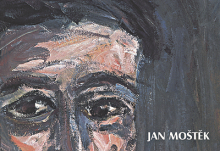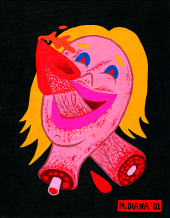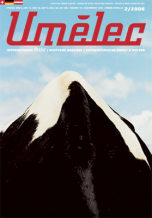| Zeitschrift Umělec 2006/1 >> Francis Alÿs: Politics of a Process | Übersicht aller Ausgaben | ||||||||||||
|
|||||||||||||
Francis Alÿs: Politics of a ProcessZeitschrift Umělec 2006/101.01.2006 Zuzana Štefková | profil | en cs |
|||||||||||||
|
“Boredom, curiosity and vanity.” These are the three things that brought Belgian artist Francis Al˙s (born 1959) to art. It was a coincidence that took him away from his previous profession as an architect. He says his work, which crosses the borders of single art fields, styles and techniques, stems from his own ignorance.
Since Al˙s was never educated in any particular artistic field, he could take up any of them. And there are a variety of strategies in his art from drawing and painting to video, from photography to installation and from performance to sculpture. But there is one underlying approach to his works, which are playful, open, based on process and on mutual interaction among people. “They can be in any style, as long as they sever the sense of the game,” he says. The principles of a gradual interpretation and apparent endless repetition are important in his work. His well-known projection of Rehearsal 1 features a useless effort of a red Volkswagen going up a steep hill accompanied by music. When it goes down again, the music fades into a medley of sounds, and then disappears. The musical sequence repeats and the car goes up again on its trip to nowhere. This projection stems from Al˙s’s interest in process and communication. The artist first asked a Mexican brass band to rehearse according to his laic instructions. The sound recording of this rehearsal was a basis for the picture part. Al˙s thus reversed the usual relation between music and action in the movie and at the same time created a work, in which an “attempt to formulate a story prevails over the story itself.” Similarly to other works of Francis Al˙s, here lies a strong metaphorical charge. The key to Al˙s’s thinking can be found in his expression “politics of a process.” He contemplates the way in which some specific phenomena of Mexican culture evokes the image of a swing or a pendulum. It is a typical structure, enabling Mexican society to stay in the “ambiguous sphere of action.” It doesn’t matter that this activity doesn’t have any result (just like the red car which never reaches the top of the hill), what is important (in the analogy to the Al˙s’s work) is the process, not the result. The same principle is in another video, shot in the poor suburbs of Mexico City, where a boy kicks a plastic bottle up a steep hill until the bottle rolls down. In another video the artist throws a ball to a dog, which retrieves it relentlessly. Al˙s demonstrates the cycling of time in an animation, where a girl pours water from one glass into another endlessly, and a gramophone plays the same song over and over. “Mańana, Mańana…“ sings a subtle female voice as the water is pouring. In the work, Set Theories, time has stopped. The miniature figure of a woman with a hoop around her neck sits under a glass full of water, which is “magically” held inside by a layer of papers on which the glass stands. In the case of time, turning in on itself, Al˙s shows a pair of pictures called Dejŕ Vu. In those he disturbs the viewers expectations following from conventions used in painting for storytelling. For Al˙s the basic thing is the feeling of contact with the place where he lives, and his work mingles freely with the surrounding from which the artist begins. In this context we can understand his walks – for example the action called Collector, where Al˙s pulled a magnetic toy on wheels, collecting metal trash along the way, or the performance Paradox of Praxis /Sometimes Making Something Leads to Nothing, where he pushed an ice cube through the streets until it melted. The fascination with the urban space of Mexico City – the place which according to Al˙s perfectly corresponds with his obsessions – shows the twelve-hour video, catching the changes of the square known as the Zocalo in the historical city center, where the shadow of a flagpole attracts the passers-by. The Mexican megalopolis is the world of ambivalence and paradox, just like the works of Al˙s. As he himself said: “Everyone of my interventions is another fragment of a story, which I am discovering, of a city, which I am mapping.” But it is not a cartographical map, rather it catches the space of memory and imagination.
01.01.2006
Empfohlene Artikel
|
|||||||||||||
|
04.02.2020 10:17
Letošní 50. ročník Art Basel přilákal celkem 93 000 návštěvníků a sběratelů z 80 zemí světa. 290 prémiových galerií představilo umělecká díla od počátku 20. století až po současnost. Hlavní sektor přehlídky, tradičně v prvním patře výstavního prostoru, představil 232 předních galerií z celého světa nabízející umění nejvyšší kvality. Veletrh ukázal vzestupný trend prodeje prostřednictvím galerií jak soukromým sbírkám, tak i institucím. Kromě hlavního veletrhu stály za návštěvu i ty přidružené: Volta, Liste a Photo Basel, k tomu doprovodné programy a výstavy v místních institucích, které kvalitou daleko přesahují hranice města tj. Kunsthalle Basel, Kunstmuseum, Tinguely muzeum nebo Fondation Beyeler.
|









































 We Are Rising National Gallery For You! Go to Kyjov by Krásná Lípa no.37.
We Are Rising National Gallery For You! Go to Kyjov by Krásná Lípa no.37.
Kommentar
Der Artikel ist bisher nicht kommentiert wordenNeuen Kommentar einfügen